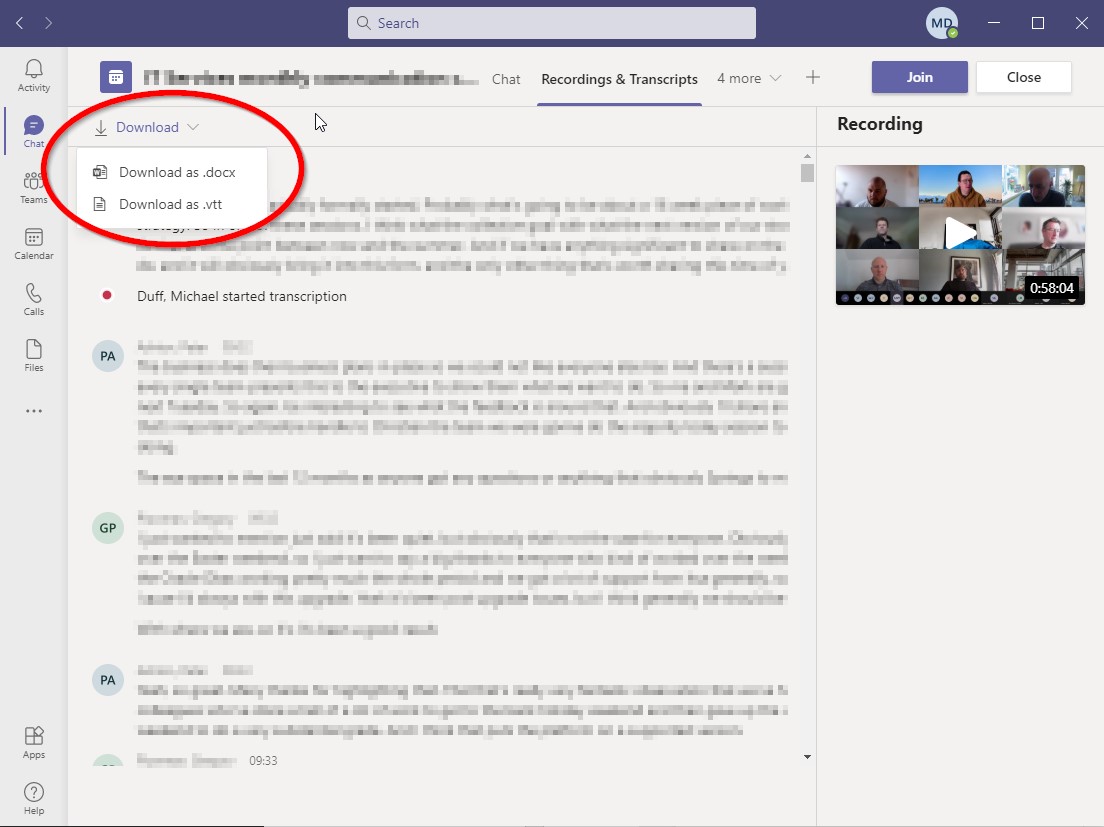Recording Meetings and Producing Transcripts in Teams
Introduction
Microsoft have recently made several changes to the way recording works in Microsoft Teams, and this guide is intended to give a full overview on how to use Teams recordings, guidance on managing the recordings and how to use the new Transcription feature within Microsoft Teams.
Teams Recordings
How to Start a Teams Recording
Any participant in a Teams Meeting can start a recording, they do not need to be the organiser of the meeting. In order to begin a recording click on the ellipsis (3 dots) in the menu at the top of the active Teams Meeting and then click on “Start Recording”, as shown here:
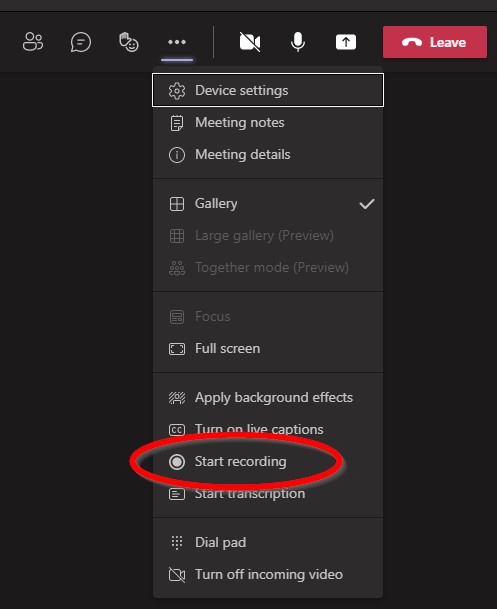
Every person in the meeting will now see a prompt at the top of the screen showing that the recording has been started:

The duration of the meeting will also show a recording symbol next to it:

When you want to stop recording again click on the ellipsis (3 dots). You will now see that the “Start Recording” button has been replaced with “Stop Recording” this halts the recording:
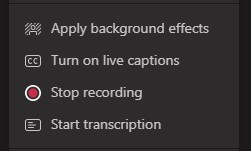
Once recording has stopped Microsoft Teams will begin saving the recorded session. Once the meeting has ended and all the participants have left, it will publish the recording in the meetings chat. This is what you’ll see in the chat window for the meeting:

Here you can see the Meeting, who recorded it, and the duration of the recording. Note the duration of the recording is the time between when you started and stopped the recording, not the duration of the entire meeting as you can see above. Our recording lasted 58min4s, but the meeting in its entirety lasted 1hr 54mins.
How Teams Meetings are stored
When you record a Teams Meeting, the file for the meeting must be stored somewhere. The recording files for meetings are now stored in the OneDrive of the person who starts the recording. They are stored in OneDrive under a file named “Recordings”.
Teams automatically shares this recording with everyone who has access to that meeting chat. If it is a new meeting, then only the attendees of that meeting will have access. If it’s a recurring meeting (either created from a chat group which is used often, or set up as recurring meeting), then everyone who is currently a member of that chat group or the recurring meeting will have access to that meeting recording, whether they were in attendance of the meeting or not.
Teams sets permissions so everyone who attended the meeting has access to view the recording. Only the person who initiated the recording and the organiser of the meeting can edit the recording (delete it or edit the file details).
Storing the recordings in OneDrive provides additional flexibility with managing the recording. For example, recordings can be immediately deleted if required, or if you need someone outside the meeting to view it then additional permissions can be added in the usual way in OneDrive.
Transcribing your Meeting
Microsoft Teams now has a built-in transcription function. This enables you to get a full transcript of the meeting, time stamped and labelled with the speakers name. The transcript is available in either Microsoft words .docx format or in .vtt format.
To use the transcription function, you must first be recording the meeting. The “Start Transcription” button is shown underneath the Stop recording button.
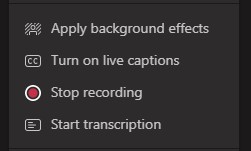
Once transcription has started, you can view the transcript live as it’s being recorded by clicking the “Show transcript button”:

This opens a bar on the right of the video window, similar to the chat or attendees’ bar. In this you’ll be able to view the transcription as it happens:
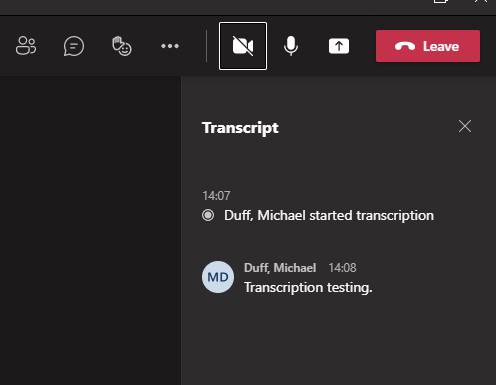
Once the meeting has finished and both the recording and transcription have stopped, you’ll see both the meeting recording and transcript appear in chat:

By clicking on the transcript, you’ll be taken to the full recording transcript in Teams. In the example below we’ve blurred-out the actual text. On the right is the recording of the meeting for quick access, and in the top left you can see the transcript download option. As previously mentioned, you can download in .docx, or .vtt format:
